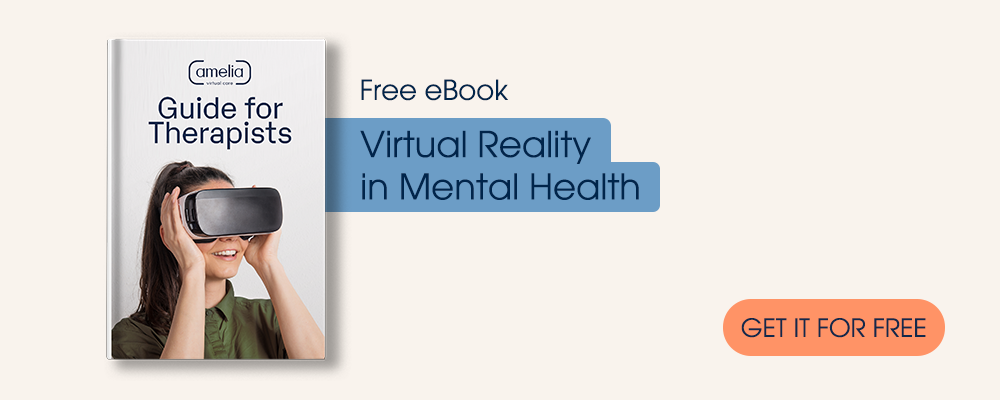How COVID-19 Is Shifting Views on Mental Health
The COVID-19 pandemic has left considerable impressions on mental health.Lockdowns, social distancing, and a declining economy have blown in a whirling gust of conditions like anxiety and grief worldwide. For those already with mental illnesses like bipolar disorder, the unprecedented uncertainty has become unbearable. Yet, if the pandemic has pulled apart the cracks of a broken health system, it has also let light pierce through the shadows often forgotten. In today’s post, we speak about the ways in which COVID-19 has shifted the paradigm surrounding mental health and the role of virtual reality in exploring this unfamiliar, yet promising terrain.
“The link’s in your Google Calendar invite”: Welcoming the therapy of tomorrow
To minimize the risk of COVID-19 transmission, health authorities implemented lockdowns and asked individuals to limit contact with others. These measures and recommendations obligated individuals with mental conditions and those in need of therapy to seek immediate, yet practical solutions to in-person consultations. The alternative? Teletherapy. The sudden surge in use of teletherapy services has accommodated accessibility needs and demonstrated that individuals can receive care from within the comfort of their homes. No longer do patients need to travel distances to speak with their therapists when sessions are available at a simple click of the mouse.Teletherapy is here to stay.Indeed, it falls In line with the overall increasing trend of telehealth (providing healthcare services by means of telecommunications technology).To fathom the potential growth of teletherapy, you need only consider this special report on telehealth published in the New England Journal of Medicine. The United States (US) Department of Health and Human Services estimated that more than 60% of all healthcare institutions had employed some form of telehealth. Similarly, private US insurance companies had reimbursed patients for telehealth services, with more than half of the states already requiring equal coverage for telehealth and in-person visits. These figures, although they may appear recent, are from 2017… imagine then what these data could be today in the context of saturated hospitals, high infection rates and new COVID-19 variants.
“I thought I was an exception…”: Accepting the magnitude of mental health
Like raging waves crashing one after another against a shore, the pandemic has shown no mercy. Pressure brought forth by social isolation, sudden loss of income and perennial unpredictabiltiy have subjected many individuals, even those with low risk factors of mental health problems, to experience high levels of anxiety and stress. Others have even developed depression or substance use disorders.The extent of this outbreak has been far-reaching. Yet, therein lies a truth that, although always held, was cast aside by many of the general public before the pandemic.Mental health does not solely concern well-known illnesses like schizophrenia or post-traumatic stress disorder. Mental health constitutes our emotional and psychological well-being, thereby affecting not the few but us all. The global outbreak has revealed that all individuals were and are at risk of mental health problems. While some may experience a more severe form of a particular mental condition, no one remains excluded from the possibility that anxiety, depression, etc. could become an unwelcoming accompaniment in our daily lives. Interestingly, in this paradigm shift, individuals have begun to de-stigamatize mental health problems and accept that certain moments could require more self-care, possible therapy sessions and introspection. Should this conscious effort to equate mental health to physical health continue, the pandemic will have contributed to reducing global burden of mental diseases and to improved care for those in need of therapy and support.
“Let’s go for a walk”: Finding resolve in the freedom of outdoors
Certain aspects have characterized the overwhelming nature of the pandemic: closed gyms, bombarding figures of COVID-19 infections, and downtowns bursting with people wanting all so badly to escape the confinements of an enclosed space. While no end is in sight, considering even the vaccination program in place, individuals continue seeking refuge in the expansive opennes of natural areas like parks, forests or countrysides. Yet, why would they do otherwise, even after the pandemic?Apart from making social distancing possible, outdoor recreation has conferred benefits that contribute to improved mental and physical well-being. Supporting this statement is evidence presented in an article that explored the possibility of outdoor therapies in mainstream mental health. For example, exposure to nature and outdoor activities could alleviate some symptoms, causes and circumstances, such as depression or anxiety. The pandemic will stop one day. However, mental health problems will not, and concomitantly, the habit of being in nature to mitigate such issues.
“Take me to another world, but let me sit here. What am I?”: A riddle worth solving the answer?
Virtual reality therapy. As the prior sections described briefly, the pandemic has brought forth many changes in the area of mental health. De-stigmatisation, accessibility and receptiveness have all become themes within this past year and a half. Individuals have come to accept the importance of mental health and promote the integration of self-care techniques in daily life routines. In a more logistical sense, teletherapy and telehealth have grown in popularity and normalcy, indeed now more than ever due to lockdowns and social distancing measures. Finally, therapy is possible, because it is economical (better health coverage and lower costs in technology). Yet, to lead these changes that are paving the new frontier in mental health, virtual reality (VR) therapy will be key. The use of VR technology in clinical and home locations provides an exciting opportunity to draw patients away from confined spaces into open, fantastical settings (like mountains and forests). It further builds upon patients’ desire to receive therapeutic care through the security of breakthrough technology. Lastly, VR efficacy is high, and VR quality is supreme. Are you interested in discovering more about Amelia Virtual Care and its VR technology in therapy sessions? Feel free to contact us! We would be glad to review a demo session with you.













